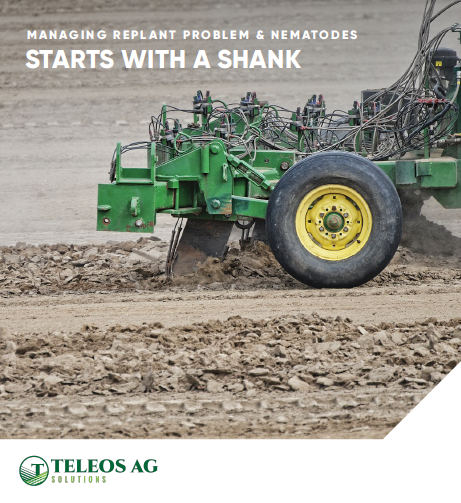Tactics to Tackle Bacterial Spot of Tomato

Bacterial spot is one of the most serious diseases of tomato in Florida because it can spread rapidly during warm periods with wind-driven rains, and fruit symptoms reduce marketability.
Photo courtesy of Clemson University
Bacterial spot is caused by several species of Xanthomonas spp. Four species have been identified on tomato: X. euvesicatoria, X. vesicatoria, X. perforans, X. gardneri. In Florida, the major species encountered is X. perforans.
Symptoms of bacterial spot appear as small, water-soaked, greasy spots on infected leaflets. On tomatoes, distinct spots with or without yellowing occur. Individual leaf spots may coalesce with each other, resulting in the browning of entire leaflets. Fruit spots often begin as dark specks with or without a white halo. As spots enlarge, they become raised and scab-like.
Survival and Spread
X. perforans is seed-borne, which allows strains to move on a global scale.
At the field level, most inocula comes from infected transplants, volunteer plants, or infected plant debris in the soil. Entry into the plant occurs through stomata, or wounds made by wind-driven soil, insects, or cultural operations. Temperatures of 75°F to 87°F are ideal for bacterial spot, but infections can occur at higher or lower temperatures.
Management Methods
An integrated approach is needed to manage this disease. No resistant tomato varieties are available commercially.
Exclusion is the best means of managing bacterial spot on tomato. Unfortunately, even the best bactericidal treatment offers only limited protection when environmental conditions are favorable for rapid disease development, especially during periods of heavy, wind-driven rains.
Sanitation is important. Pepper and tomato volunteers and solanaceous weeds should be destroyed between crops. Purchase only certified, disease-free transplants and seed.
Infected transplants can provide for long-distance transplant of the disease. To reduce the incidence of disease, transplant houses should be located away from tomato or pepper fields. Inspect transplant trays every daily for signs of disease and rouge out and destroy trays at the first sign of disease. Transplant house workers should wash and sanitize their hands frequently to avoid bacteria moving from tray to tray and house to house.
Since water movement spreads the bacteria from diseased to healthy plants, workers and farm equipment should be kept out of fields when fields are wet, because the disease will spread readily under wet conditions.
The traditional recommendation for bacterial spot control consists of copper and maneb or mancozeb. The effectiveness of copper is limited because of the widespread occurrence of copper tolerance among strains of Xanthomonas.
In replicated trials at UF, two products, Actigard (acibenzolar-S-methyl, Syngenta) and Cueva (copper octanoate, Certis), consistently performed better in managing bacterial spot over standard applications of copper hydroxide in repeated trials when treated alone or combined with other products.
It is important to apply sprays before and during rainy periods. If conditions are favorable, frequent spraying may not be sufficient to maintain bacterial spot below damaging levels.
Consult UF/IFAS recommendations for formulations, rates, and intervals of currently labeled materials for bacterial spot in Florida.










